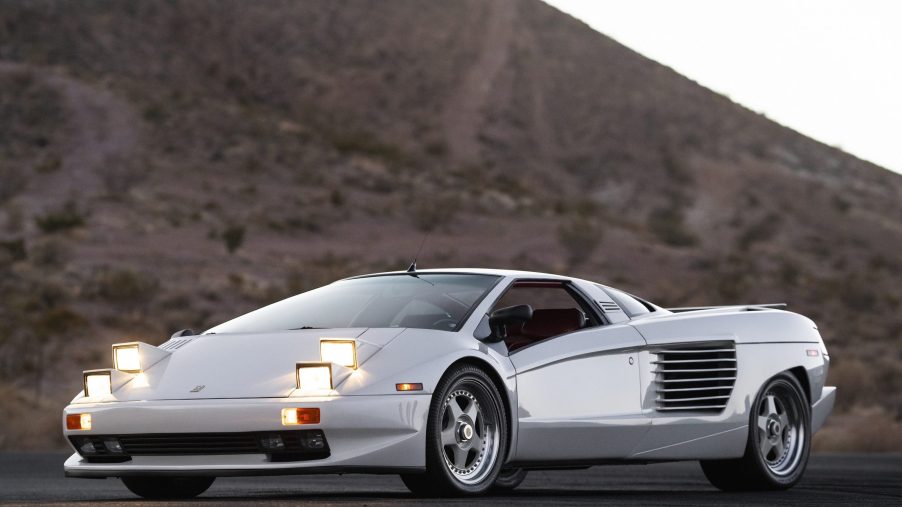
Own the Countach’s Big Brother: Giorgio Moroder’s Cizeta V16T
Giorgio Moroder Cizeta V16T auction article highlights:
- The Cizeta V16T is a ‘90s American supercar spearheaded by exotic car dealer Claudio Zampolli and famed music producer Giorgio Moroder
- It has a Lamborghini-derived transversely-mounted V16 engine, a body designed in part by Countach designer Marcello Gandini, and was built under the guidance of the same artisan that built the first 250 GTO
- Cizeta only made 10 V16Ts, including one prototype for Moroder—and RM Sotheby’s is putting that prototype up for auction
For some, the original Lamborghini Countach represents some of Marcello Gandini’s finest work. But it’s just one of several supercars and sports cars that the Italian designer penned. Also, though Gandini designed several Lamborghinis besides the Countach while at Bertone, he worked on other Italian automakers’ cars, too. This portfolio includes what is arguably his greatest expression of wedge design, the Cizeta V16T. And now, one of the greatest versions of the V16T could be yours.
From the minds of the Countach’s creator, an exotic supercar dealer, and music legend Giorgio Moroder comes the wedge-tastic Cizeta V16T
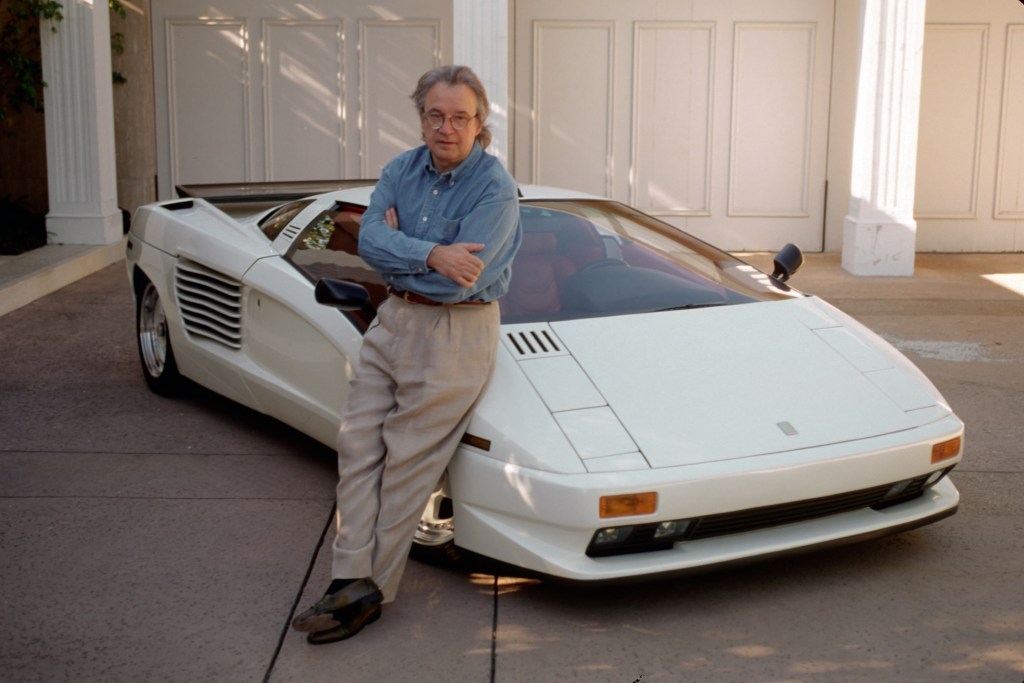
Celebrities owning customized cars is nothing new. But it’s rare for a celebrity to be directly involved in a vehicle’s design and engineering, as is the case with the motorcycle company Keanu Reeves co-founded. However, that’s exactly what happened with the Cizeta V16T and Academy Award- and Grammy-winning electronic composer Giorgio Moroder.
But the Cizeta V16T story doesn’t start with Moroder. Instead, it starts with an altered Gandini Lamborghini design, The Drive explains. After designing the Countach, Gandini drafted a proposal for its successor, the Diablo, in the 1980s. Lamborghini didn’t reject it outright but had its stylists tweak it a bit. This ticked Gandini off and he took his business elsewhere, Hagerty reports.
The ‘elsewhere’ in this case was Claudio Zampolli, a former Lamborghini test driver and engineer turned Italian supercar dealer. But while business was good, Zampolli didn’t just want to work on and sell other peoples’ cars: he wanted his own supercar. He even had a name and a rough idea. However, he still needed a design, someone to build it, and, most importantly, a business partner.
Here’s where Giorgio Moroder, the ‘father of disco,’ steps in. An exotic enthusiast himself, Moroder frequented Zampolli’s shop. Soon, the two got talking and decided to get into the supercar business, with Moroder providing 50% of the investment. Unfortunately, later disagreements lead to Moroder’s departure, hence why the car is called ‘Cizeta V16T,’ not ‘Cizeta-Moroder V16T.’
As for the design, Zampolli heard about what happened with Gandini thanks to his Lamborghini connections. So, he got in touch with the designer, who agreed to pen something for the fledgling company. Finally, Zampolli got veteran craftsman Giancarlo Guerra—who worked for Lamborghini and shaped the first Ferrari 250 GTO—to help build the supercar.
And what a supercar the Cizeta V16T is.
A 16-cylinder engine is just the start of this Italian mid-engine supercar’s insanity
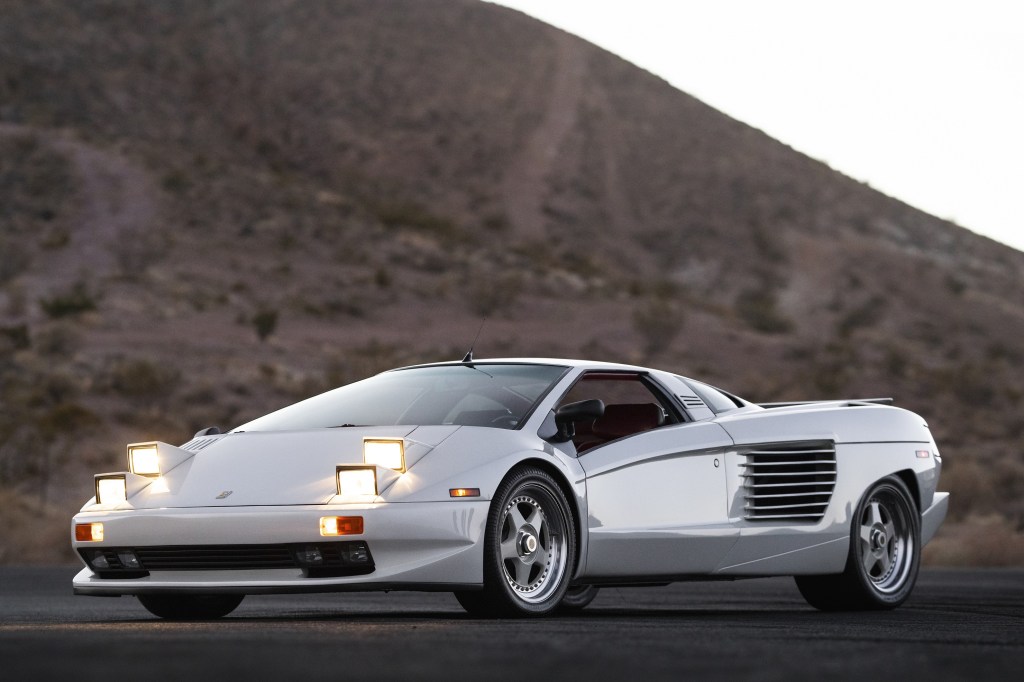
| Cizeta V16T | |
| Engine | 6.0-liter V16 |
| Horsepower | 540 hp |
| Torque | 400 lb-ft |
| Transmission | Five-speed manual |
| Curb weight | 3750 lbs |
| 0-60 mph time | 4.2 seconds |
Although some claim the Cizeta V16T looks like Gandini’s original Diablo design, it’s not quite that, Hagerty says. Instead, it’s a hybrid between Gandini’s refinement of his original design and Zampolli’s ideas. The back stems from Zampolli, while the front, quad pop-up headlights and all, is all Gandini. And if the Countach looks insane today, the V16T is certifiably nuts.
Let’s start with the name. ‘Cizeta’ comes from the Italian pronunciation of C.Z., Zampolli’s initials, while ‘V16T’ speaks to this supercar’s engine. That engine is a 6.0-liter, quad-cam V16 that’s essentially two Lamborghini Urraco V8s stuck together. And not only does it have four camshafts, but it also has two fuel-injection systems and two timing chains.
Oh, and because Zampolli was inspired by the Miura, that V16 is mounted transversely in the middle. Hence the ‘T’ in ‘V16T.’ Though that could just as easily refer to the five-speed transaxle, which is there for weight-distribution reasons.
The Cizeta V16T kicks like an 808—but also knows when to kick back and cruise
Given how big that V16 is, you might think that the Cizeta V16T is enormously wide. But it’s less than an inch wider than the Diablo, which ended production with a 6.0-liter V12. Furthermore, underneath the wild alloy bodywork, the V16T has all the necessary ‘90s supercar tech. It has a spaceframe chassis, pushrod suspension with inboard Koni dampers, and adjustable anti-roll bars. Also, cross-drilled and slotted Brembo brakes as well as OZ Racing wheels with racing-style single lug nuts.
Add all this up and you have a seriously impressive supercar. That V16 “growls menacingly when prodded,” but is torquey and smooth enough for city driving, Car and Driver says. And it’s always read to snarl and snap your head back with acceleration should the desire arise. The brakes are “wonderfully secure,” the clutch is heavy but not overly tiring, and the turning circle is fairly small.
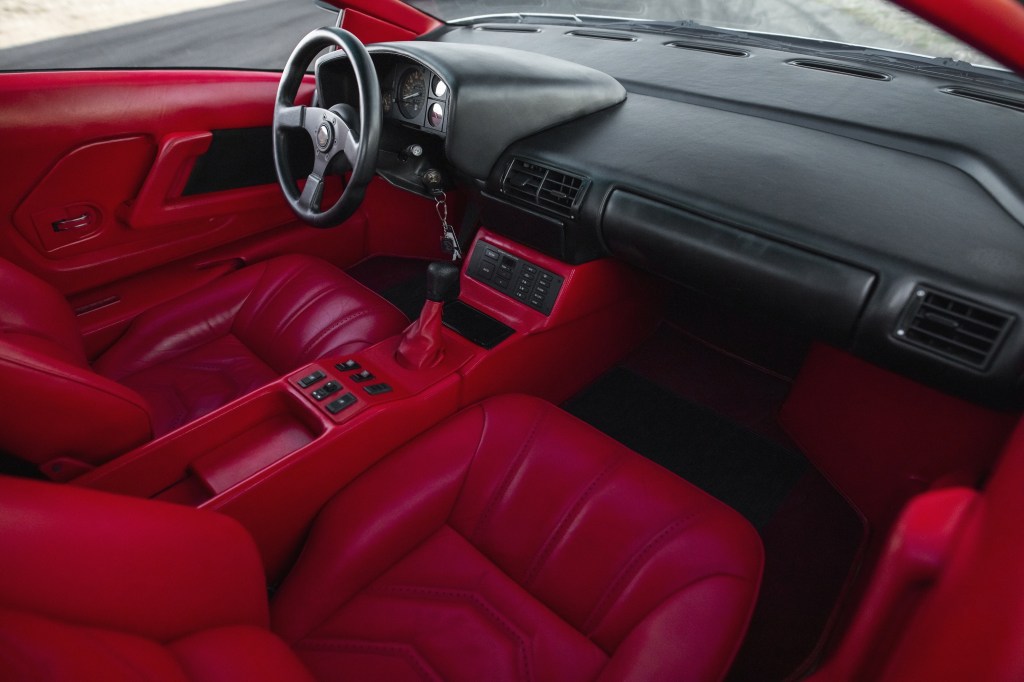
Yet despite its Countach-esque looks, the Cizeta V16T is surprisingly civil. The leather-upholstered seats are rather comfy, for one. Secondly, the interior is rather spacious for such an extreme-looking car and features excellent materials and all-around visibility. Admittedly, the Momo steering wheel is a bit of a reach and there’s little-to-no luggage space. But otherwise, the V16T feels like a daily-drivable supercar.
That’s arguably the most insane thing about this bonkers car.
You could blast some synth beats in Giorgio Moroder’s personal Cizeta V16T if you win the upcoming auction
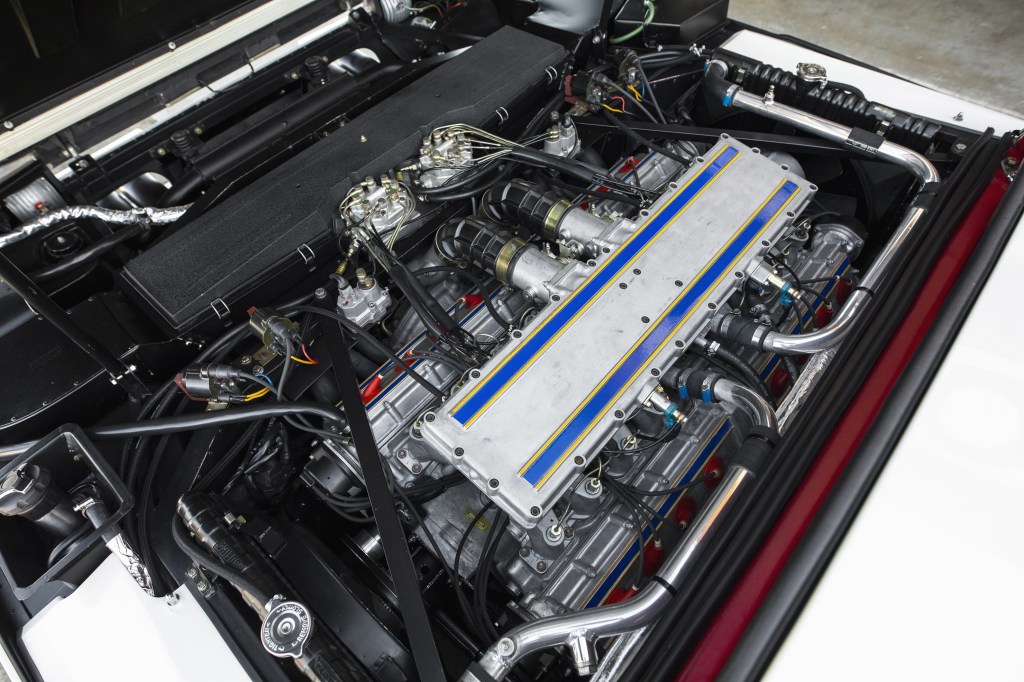
Unfortunately, high production costs, a recession, and multiple disagreements meant few Cizeta V16Ts left the production line. 10, specifically, including one prototype that went to Giorgio Moroder. And now, that very prototype is headed to the RM Sotheby’s auction block.
Zampolli made some changes to the V16T after unveiling the prototype, meaning Moroder’s car is unique even amongst this rarified crowd. Its interior is “completely unique,” RM Sotheby’s notes, and the exterior features different fog lights, mirrors, and turn signals, as well as larger air intakes. Also, its restorer and caretaker, California-based Canepa, installed some extra heat shielding around the fuel tanks. But it’s otherwise stock—and fully functional.
If you want to bid on a genuine one-of-a-kind example of a rare classic supercar, Moroder’s Cizeta goes under the hammer on January 27, 2022. But bring plenty of cash, because the last V16T RM Sotheby’s sold, the Sultan of Brunei’s car, went for $665,000 in January 2021. Though to be fair, a new V16T cost $650,000 back in 2002. And that still makes it cheaper than some Countaches.
Follow more updates from MotorBiscuit on our Facebook page.


